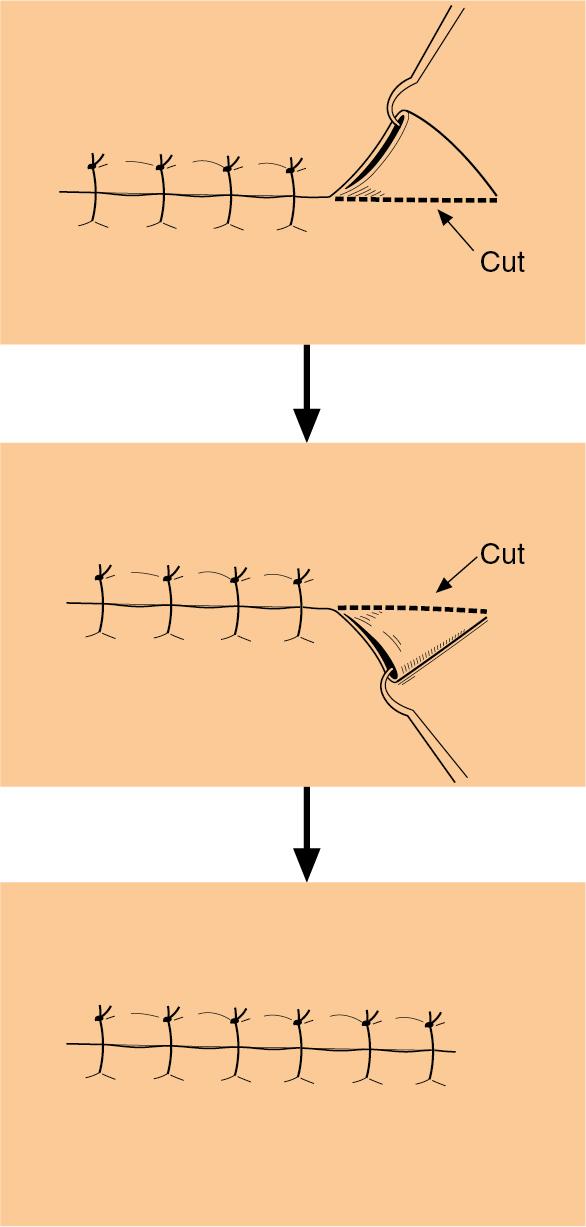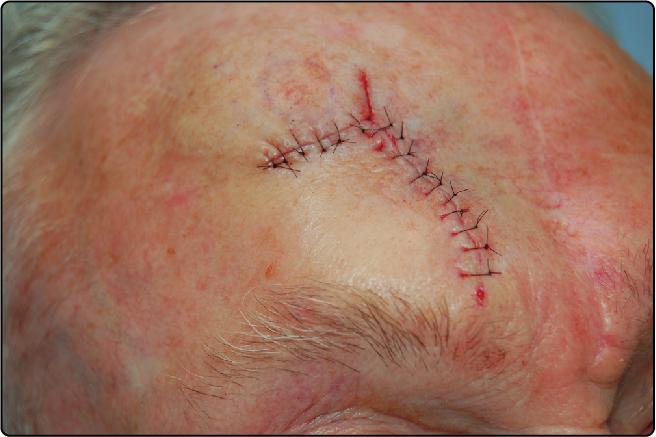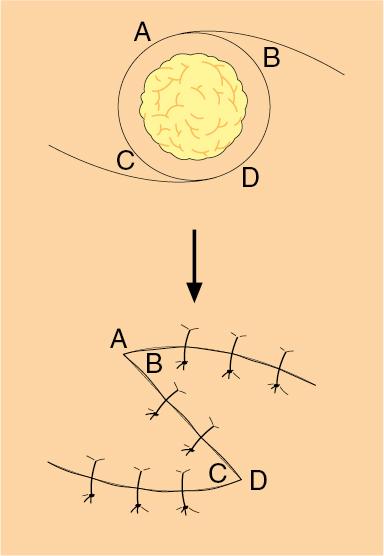Physical Address
304 North Cardinal St.
Dorchester Center, MA 02124
Some dermatologists specialize in the field of skin surgery. All registrars and residents in dermatology are trained in these techniques. An outline of the subject is given here, including the use of flaps, grafts and Mohs’ surgery, along with mention of lasers and photodynamic therapy, and of some basic cosmetic procedures.
Simple plastic repairs are carried out by the following:
Dog-ear excision : dog ears are redundant tissue at the end of an excision line. In sites of high elasticity or where tissue conservation is critical, circular excision of the lesion with appropriate margins is preferable to a predetermined ellipse excision. The redundant skin is lifted like a tent using a skin hook then excised each side (‘dog ears’), and the extended wound is sutured ( Fig. 64.1 ).

M-plasty : the M-plasty is an excision that reduces the length of an ellipse where space is limited, e.g. on the face. The ‘M’ end of the ellipse is formed by imagining one tip of the ellipse is folded in.
Side-to-side (‘direct’) closure of a surgical defect is often possible by undermining the edges of the wound using scissors to free the tissue but, when this is not possible, a skin graft or flap is considered. The simplest types of flap are advancement and rotation:
Advancement flap : here, the skin flap is advanced in one direction over the defect. The flap of skin is created by making excision lines away from the defect to be covered, undermining to free the skin, advancing it into the defect and then suturing it in place ( Fig. 64.2 ).

Rotation flap : a defect may be covered by rotating in skin from one side. One side of the excision wound is extended as an arc that is up to three times the length of the primary defect, depending on the elasticity of the skin at that body site (the scalp and dorsal hand are the least elastic). The pedicle is undermined, rotated in to the defect and sutured in place ( Fig. 64.3 ).

Become a Clinical Tree membership for Full access and enjoy Unlimited articles
If you are a member. Log in here